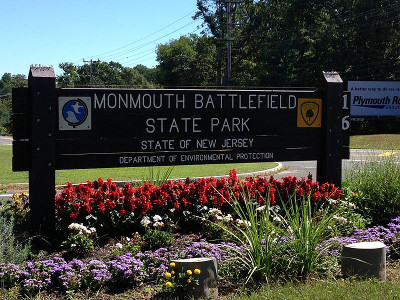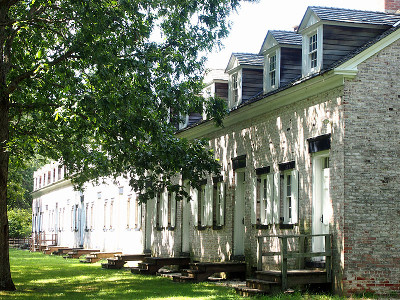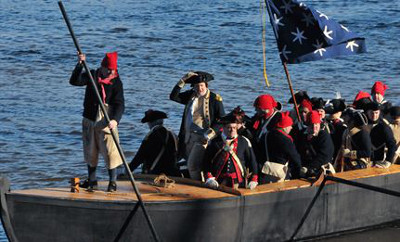Historic Sites for History Lovers in NJ
American inventor and founding father, Benjamin Franklin once said: “New Jersey is a barrel that is tapped at both ends.” Of course Franklin was referring to the fact that New Jersey is situated between the two great cities of Philadelphia and New York. What many are unaware of is the rich historical legacy that New Jersey has. Whether you are a tourist or a resident, New Jersey has a number of museums, parks, and battlefields for history lovers to visit.
Monmouth Battlefield State Park

Source: Wikimedia Commons
Address: 16 Business Route 33, Manalapan, New Jersey 07726
The Monmouth Battlefield State Park is located within the heart of Monmouth County. You can walk the trails and take in views of the preserved eighteenth-century rural farmland or you can learn more about the Battle of Monmouth.
The Battle of Monmouth, which took place on June 28, 1778, was one of the largest battles of the Revolutionary War. The British command-in-chief of North America, General Sir Henry Clinton received orders to leave Philadelphia and to travel immediately to New York as the French had joined the war. The major battle began as George Washington and the Continental Army attacked the posterior of the British army column while they were en route to New York.
Even though the British had far more men, this was a risky endeavor and demonstrated the strength of the Continental Army. It is said that more men died at the battle from the heat (100 degrees Fahrenheit) than from the opposing armies. The American folkloric heroine, Molly Pitcher is often associated with this battle.
The Historic Village at Allaire

Source: Wikimedia Commons
Address: 4265 Atlantic Avenue, Wall Township, New Jersey 07727
Also in Monmouth County is the Historic Village at Allaire, a living history museum, that takes you back to the early nineteenth-century. At Allaire Village, you can explore the many historically authentic homes and learn about the people who once lived there. There is a general store, a row house museum, a bakery, a manager’s house, a foreman’s cottage, Mr. Allaire’s big house, and an active blacksmith shop. In addition, there are numerous trails visitors can take.
Allaire Village volunteers reenact the daily life and events of the year 1836, when it was known as the Howell Iron Works. James P. Allaire, for whom the village is named, was a wealthy master mechanic, steam engine builder, and company owner who founded Howell Iron Works in 1822 after purchasing the land. Mr. Allaire would go on to employ over 400 workers and their families.
Thomas Edison National Historical Park

Source: Wikimedia Commons
Address: 12 Honeysuckle Avenue, West Orange, New Jersey 07052
Did you know that Thomas Edison’s had a residence in Essex County? Edison, known as “America’s greatest inventor” and “the Wizard of Menlo Park”, was not only famous for his ingenious inventions but was known for his persistence in his projects. It is said that Edison had 1,093 patents in his name and is credited with inventing: the phonograph, the long-lasting electric light bulb, the battery for an electric car, and the motion picture camera. At the Thomas Edison Historical Park, you can step back into the late Victorian period and see the laboratory of one of the greatest minds to ever live. You can view not only his laboratory but his home, Glenmont, that he shared with his wife Mina and their children. This was also where he passed away on October 18, 1931.
Washington Crossing Park

Source: Joint Base McGuire-Dix-Lakehurst
Address: 355 Washington Crossing Pennington Road, Titusville, New Jersey 08560
Created in 1917, Washington Crossing State Park is located in northwestern Mercer County and boasts 500 acres and a number of restored buildings from the Colonial period. Every year, volunteers clad in Colonial attire of the Continental Army recreate the crossing of the Delaware.
Few American images are as iconic as that of George Washington crossing the Delaware on a dark winter night. It seemed like the Continental Army, which just faced a series of defeats, was on its last leg. Would it survive this war? In his darkest hour, Washington formulated an ingenious plan. After having retreated to Pennsylvania, Washington crossed the Delaware River with his men with the intention of recapturing Trenton and to attack the neighboring Hessian outposts.


